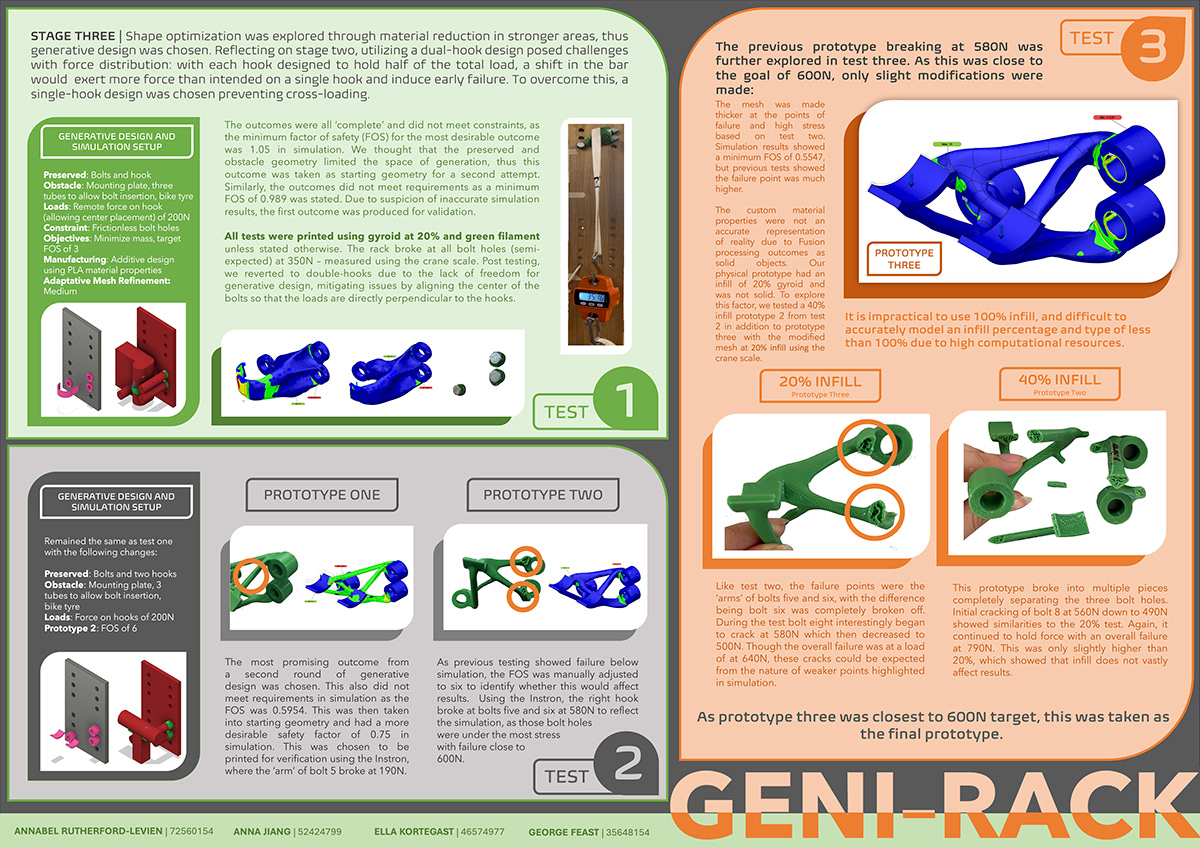Bike Rack using Simulation and Generative Design
The aim of this project is to use Fusion260 to assist in the design process of a column-mounted support for a bicycle, with only three assigned bolts. The project is divided into three stages that focus on subtractive manufacturing, simulation and AI generative design, respectively. These functions aided in product manufacturing, product verification and product development.
Stage One: Bike Rack
A bike rack was designed using subtractive manufacturing, in this case, the laser cutter. The design must be self-assembled without the need for fixings/fasteners other than the assigned three bolts.

Stage Two: Simulation
Simulation acts as a verification process to ensure a well-developed design meets the predetermined specifications. The area of focus was the force/load the bike rack could hold before plastic deformation - ensuring it could hold a specified load with no smaller than a factory of safety of 3. The software simulation results were validated to ensure results were correct in a real environment.

Stage Three: Generative Design
Generative design uses artificial intelligence, embedded into Fusion360, to develop iterations based on pre-determined constraints the user feeds into the software. Again, the end goal is a bike rack that is able to withstand a predetermined force load. Validation through 3D-printing the model and applying the load in real life.

The software used was Fusion360 as part of a Product Design, University of Canterbury group project. Stage one was completed in collaboration with Ella Kortegast, Anna Rutherford-Levien and Campbell Tonkin. Stage two and three were completed in collaboration with Ella Kortegast, Annabel Rutherford-Levien and George Feast (2023).
